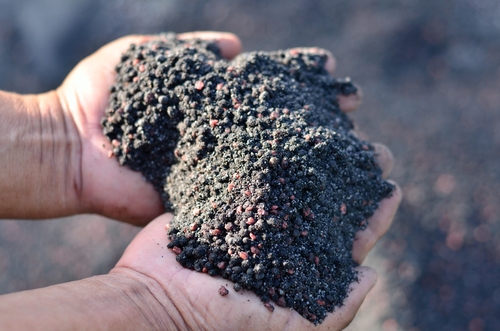Nutrient Pollution—What It Is and What to Do About It
 |
According to the U.S. Environmental Protection Agency (EPA), the impacts of nutrient pollution are found in all types of our nation’s water bodies. In fact, “More than 100,000 miles of rivers and streams, close to 2.5 million acres of lakes, reservoirs and ponds, and more than 800 square miles of bays and estuaries in the United States have poor water quality because of nitrogen and phosphorus pollution.” Nutrients can also seep into groundwater, potentially affecting drinking water supplies for about 90 million people and putting a financial burden on public systems that have to treat that water.
There are many sources of nutrients, but the primary sources are:
- Agriculture—both fertilizers and livestock manure are rich in nitrogen and phosphorus that impact water quality via runoff, and can also release gaseous nitrogen-based compounds like ammonia and nitrogen oxides that impact both air and water quality.
- Stormwater—wet weather flows rinse the surface and carry nutrients into water bodies. In particular, combined sewer overflows are especially damaging as they discharge not only surface nutrients, but those contained in untreated sewage released during the event.
- Wastewater treatment plants (WWTPs)—Processing about 34 billion gallons of wastewater each day, WWTPs may or may be able to remove nutrients before discharge to a water body. These nutrients come from human waste, food, and some soaps and detergents. Septic systems serving about 25 percent of U.S. homes are another source, and the EPA estimates that 10 to 20 percent of septic systems fail at some point from aging, poor design, overloading, and poor maintenance, and they can release elevated levels of nutrient.
- Fossil-fuel combustion—whether at power plants, in industry or in vehicles, the result is airborne nitrogen oxide pollution that degrades air quality and eventually falls back to land and is transported to water through stormwater runoff.
- Homes—Over-fertilizing and over-watering lawns; pet waste; and laundry, dish, and car washing soaps and detergents containing phosphates are all common direct contributors to nutrient pollution.
Forget expensive calls to lawyers and consultants. With Enviro.BLR.com, you get instant access, 24/7. Try it out today and get the 2014 EHS Salary Guide, absolutely free. Download Now.
Knowing where nutrients come from is only half the battle; the other half is taking action to reduce them. Since many of the sources overlap, there are several ways to reduce the flow of nutrients that almost anyone can do.
For example, whether it is backyard pet waste or barnyard cow manure, it should be managed so that it does not end up in stormwater runoff. The same goes for fertilizers, which should be applied only in the proper amount, at the correct time of year, and using methods that can significantly reduce the potential for fertilizer runoff.
Everything You Need for Environmental Compliance
Enviro.BLR.com puts everything you need at your fingertips, including practical RCRA, CAA, CWA, hazardous waste regulatory analysis and activity, news, and compliance tools. Try it at no cost or risk and get a FREE report.
Green infrastructure can also help minimize stormwater runoff through infiltration, such as with rain gardens, pervious pavement, and green roofs. Also, landscaping wastes from homes and businesses should be mulched or composted on-site or taken to community composting operations.
On a personal choice level, use cleaning products that are phosphate-free and keep in mind that when it comes to detergents, more is NOT better; so use only the amount needed to get the job done. Being mindful of energy use is also key. The EPA recommends using Energy Star® appliances, using natural light and warmth during the winter and keeping shades drawn in the summer, using power strips, and lighting with energy-efficient light bulbs. Also, drive less and opt instead to carpool, bike, walk, or telecommute. Energy-efficient vehicles and better vehicle maintenance can also help.
For those with septic systems, regular inspection, pumping, and maintenance are essential, and the EPA recommends not using additives, reducing household garbage disposal use, and avoiding areas near drinking water sources or with high water tables when installing a new septic system.
